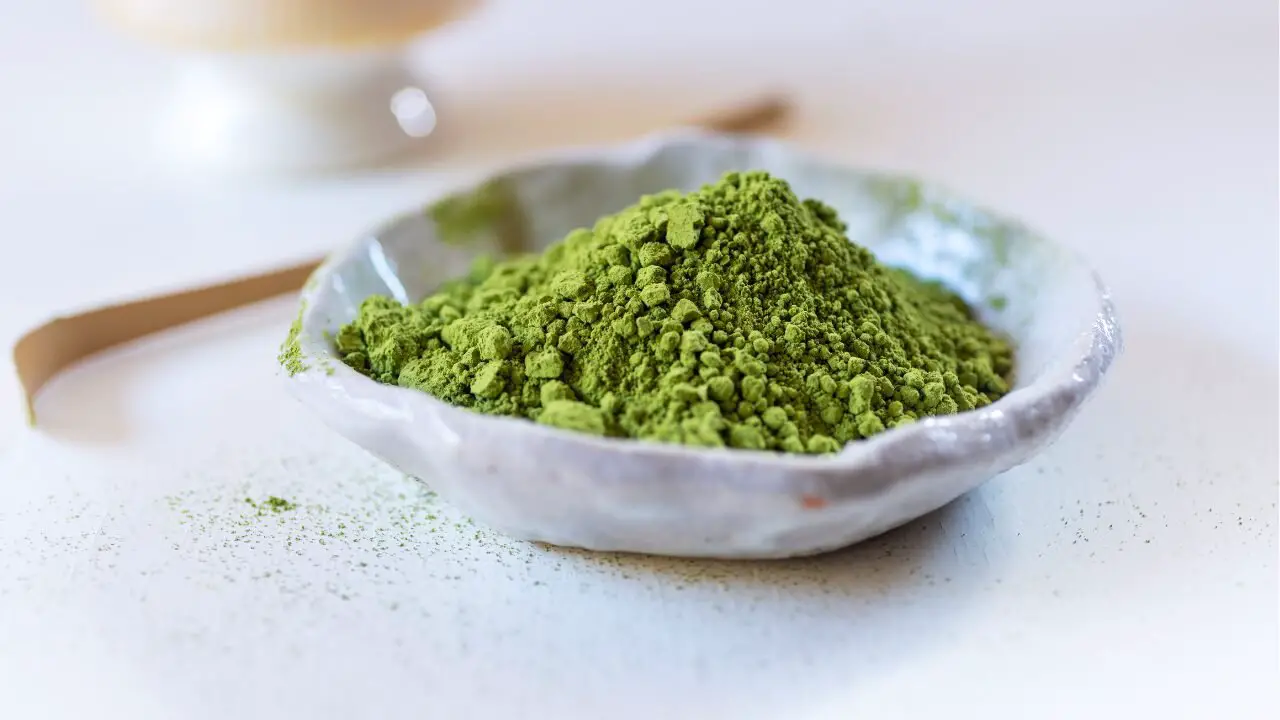Last Updated on October 20, 2024
Matcha powder is a finely ground powder made from green tea leaves. It has become increasingly popular in recent years due to its many health benefits. Matcha powder is made from the highest quality green tea leaves, which are carefully selected and then ground into a fine powder. The process of making matcha powder is a complex one, involving several steps that must be carefully followed in order to produce the highest quality product. In this article, we will discuss the process of how matcha powder is made, from the selection of the tea leaves to the final product.
Table of Contents
Exploring the Ancient Art of Matcha Powder Production
Matcha powder is an ancient art form that has been practiced in Japan for centuries. It is a finely ground powder made from green tea leaves that has been used in traditional Japanese tea ceremonies for centuries. The process of producing matcha powder is a complex and delicate one, requiring skill and precision.
The first step in the process is to select the highest quality green tea leaves. The leaves are then steamed and dried, and then ground into a fine powder. The grinding process is done by hand using a stone mill, which is a slow and labor-intensive process. The powder is then sifted to remove any impurities and to ensure a consistent texture.
Once the powder is ready, it is ready to be used in a variety of ways. Matcha powder can be used to make a traditional Japanese tea ceremony, or it can be used to make a variety of other beverages, such as lattes, smoothies, and even ice cream. It can also be used as an ingredient in baking and cooking.
Matcha powder is known for its health benefits, as it is rich in antioxidants and other beneficial compounds. It is also known to boost energy levels and improve mental clarity.
The production of matcha powder is an art form that requires skill and precision. It is a process that has been practiced for centuries and is still practiced today. It is a unique and special way to enjoy the flavor and health benefits of green tea.
The Traditional Japanese Method of Making Matcha Powder
The traditional Japanese method of making matcha powder is a centuries-old process that has been passed down through generations. Matcha is a type of green tea powder that is made from the leaves of the Camellia sinensis plant. It is a popular beverage in Japan and is used in many traditional ceremonies.
The process of making matcha powder begins with the harvesting of the tea leaves. The leaves are carefully hand-picked and then steamed to prevent oxidation. After steaming, the leaves are dried and then ground into a fine powder. The grinding process is done using a stone mill, which is a slow and labor-intensive process. The powder is then sifted to remove any large particles and to ensure a smooth texture.
The quality of the matcha powder is determined by the type of tea leaves used, the grinding process, and the sifting process. The highest quality matcha powder is made from the youngest leaves of the tea plant, which are harvested in the spring. The leaves are then steamed and dried before being ground into a fine powder. The grinding process is done slowly and carefully to ensure that the powder is of the highest quality. The sifting process is also important, as it removes any large particles and ensures a smooth texture.
The traditional Japanese method of making matcha powder is a time-honored process that has been passed down through generations. It is a labor-intensive process that requires skill and patience, but the end result is a high-quality powder that is perfect for making a delicious cup of matcha tea.
How Matcha Powder is Harvested and Processed
Matcha powder is a finely ground powder made from specially grown and processed green tea leaves. It is a popular ingredient in many traditional Japanese dishes and beverages, and is also used in a variety of modern recipes. The unique flavor and health benefits of matcha powder make it a popular choice for many tea drinkers.
The process of harvesting and processing matcha powder begins with the cultivation of the tea leaves. The tea plants used to make matcha are grown in the shade for several weeks before harvest. This process increases the amount of chlorophyll in the leaves, giving them a vibrant green color and a unique flavor.
Once the leaves are harvested, they are steamed and dried to prevent oxidation. The leaves are then de-stemmed and de-veined, and the remaining leaf material is ground into a fine powder. The grinding process is done slowly and carefully to ensure that the powder retains its flavor and nutritional value.
The final step in the process is the sorting and grading of the matcha powder. The powder is sorted according to color, texture, and flavor, and then graded according to quality. The highest grade of matcha powder is known as ceremonial grade, and is the most sought-after variety.
The harvesting and processing of matcha powder is a delicate process that requires skill and precision. The result is a unique and flavorful powder that is packed with antioxidants and other beneficial compounds. Matcha powder is a popular choice for many tea drinkers, and its unique flavor and health benefits make it a great addition to any cup of tea.
The Benefits of Drinking Matcha Powder
Matcha powder is a type of green tea that has been gaining popularity in recent years due to its numerous health benefits. Matcha powder is made from the leaves of the Camellia sinensis plant, which is the same plant used to make other types of green tea. The leaves are shade-grown for several weeks before they are harvested and then ground into a fine powder. This powder can then be used to make a variety of beverages, including tea, smoothies, and lattes.
Matcha powder is rich in antioxidants, which can help protect the body from damage caused by free radicals. It also contains high levels of catechins, which are compounds that have been shown to have anti-inflammatory and anti-cancer properties. Additionally, matcha powder is a good source of fiber, which can help to regulate digestion and keep you feeling full for longer.
Matcha powder also contains high levels of L-theanine, an amino acid that has been shown to reduce stress and improve focus. This can be beneficial for those who are looking to improve their concentration and focus. Additionally, matcha powder contains caffeine, which can help to boost energy levels and improve alertness.
Overall, matcha powder is a great way to get a variety of health benefits. It is rich in antioxidants, catechins, fiber, and L-theanine, which can help to improve overall health and wellbeing. Additionally, it contains caffeine, which can help to boost energy levels and improve alertness. For these reasons, matcha powder is an excellent choice for those looking to improve their health and wellbeing.
Understanding the Different Grades of Matcha Powder
Matcha is a type of green tea powder that has become increasingly popular in recent years. It is made from the leaves of the Camellia sinensis plant, which is the same plant used to make other types of tea. Matcha is unique in that it is ground into a fine powder, making it easier to incorporate into recipes and beverages. There are several grades of matcha powder available, each with its own unique flavor and characteristics.
The highest grade of matcha powder is known as ceremonial grade. This grade is made from the youngest and most tender leaves of the Camellia sinensis plant. It has a bright green color and a sweet, grassy flavor. Ceremonial grade matcha is the most expensive and is typically used in traditional Japanese tea ceremonies.
The next grade of matcha powder is known as premium grade. This grade is made from slightly older leaves than ceremonial grade, and it has a slightly darker green color. The flavor is still sweet and grassy, but it is slightly less intense than ceremonial grade. Premium grade matcha is often used in lattes, smoothies, and other recipes.
The third grade of matcha powder is known as culinary grade. This grade is made from the oldest leaves of the Camellia sinensis plant. It has a dull green color and a slightly bitter flavor. Culinary grade matcha is the least expensive and is often used in baking and cooking.
No matter which grade of matcha powder you choose, it is important to store it in an airtight container in a cool, dry place. This will help to preserve its flavor and color. Matcha powder can also be frozen for up to six months.
When selecting matcha powder, it is important to consider the grade and the intended use. Ceremonial grade is best for traditional tea ceremonies, while premium grade is best for lattes and smoothies. Culinary grade is best for baking and cooking. No matter which grade you choose, you can be sure that you are getting a high-quality product.
Q&A
1. What is matcha powder?
Matcha powder is a finely ground powder made from green tea leaves. It is a traditional Japanese tea that has been used for centuries in the Japanese tea ceremony.
2. how is matcha powder made?
Matcha powder is made by grinding whole green tea leaves into a fine powder. The leaves are first steamed, then dried and ground into a powder.
3. What are the health benefits of matcha powder?
Matcha powder is rich in antioxidants, which can help protect the body from free radical damage. It also contains caffeine, which can help boost energy levels and focus. Additionally, matcha powder is thought to help boost metabolism and aid in weight loss.
4. How should matcha powder be stored?
Matcha powder should be stored in an airtight container in a cool, dry place. It should also be kept away from direct sunlight.
5. How is matcha powder used?
Matcha powder is typically used to make a traditional Japanese tea called matcha. It can also be used in baking, smoothies, lattes, and other recipes.
Conclusion
Matcha powder is a unique and flavorful green tea powder that is made from the highest quality green tea leaves. The leaves are carefully harvested, steamed, dried, and then ground into a fine powder. The powder is then packaged and ready for consumption. Matcha powder is a great way to enjoy the health benefits of green tea in a convenient and delicious way.

Barbara is an environmental activist and sustainability advocate who loves living green and sustainable. She firmly believes in reducing her carbon footprint and has been making great strides towards achieving this goal. Barbara is a vegan and avid recycler and has been actively involved in community gardens and other green initiatives. She is passionate about spreading awareness about the importance of living in a sustainable and eco-friendly manner. Barbara is always looking for ways to make a difference in her community and beyond. She is a huge advocate for preserving nature and the planet for future generations.

